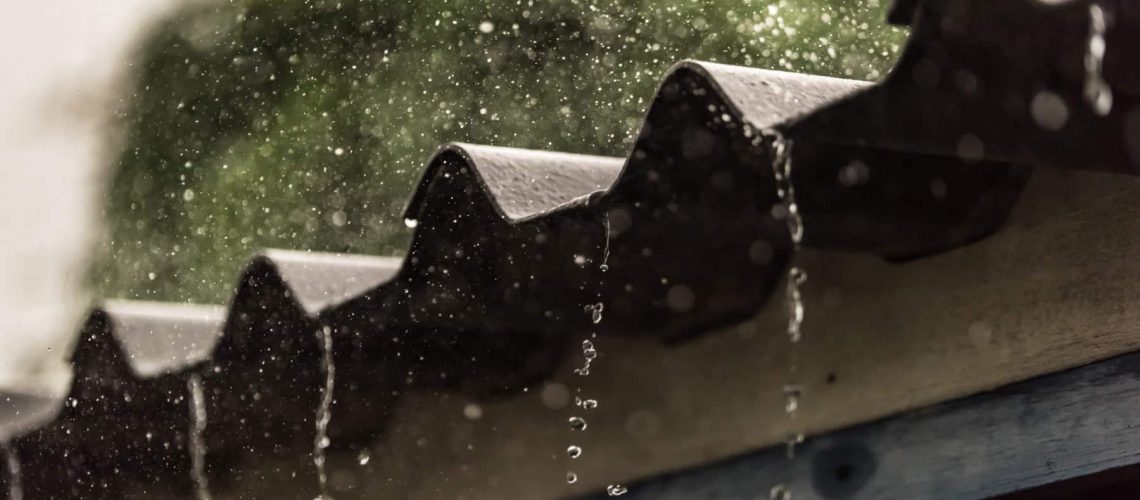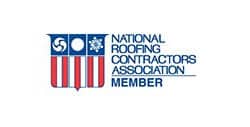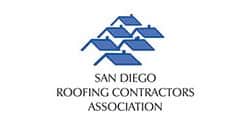A roof over your head is the ultimate sign of personal comfort and security. However, on those days of particularly heavy rain, you may be experiencing some water making its way into your home. Along with making your home colder and pointing to potential drafts, roof leaks in heavy rain can contribute to structural damage and the formation of mold and mildew. Mold can lead to more damage as well as health issues, including breathing problems and skin irritation. Learn more about preventing a future leak below.
Common Reasons for a Leaky Roof
Knowing how to stop a leak in the rain starts with understanding why your roof is leaking in the first place. The exact reason for water intrusion can vary from home to home, so consult a licensed roofing contractor to examine and audit your roof.
Degrading Shingles
Shingles are designed to protect you from all the elements, whether it’s the overbearing sun or sudden snows. While there is a wide range of roofing materials available, asphalt shingles remain the most common type of roofing in most residential buildings in the United States. Asphalt shingles are easy to install, affordable, and relatively hardy. They are also easy to customize to suit a wide range of different styles and aesthetics.
However, asphalt shingles also tend to have the shortest lifespan compared to other roofing materials. Asphalt shingles are composed of a covering of granules that protect the core from UV light and other elements, but these granules do experience wear and tear. Without any repairs or replacements, the roof tiles will eventually degrade, providing no protection from rain.
Metal shingles are becoming more common, but they are still susceptible to degradation. Over time, the combination of moisture and heat can cause metal roofing to succumb to rust or corrosion. The shingles can then degrade, forming holes that allow rain to leak into your home.
Skylights
Skylights are an incredible feature that allow more natural light directly into your home. Unfortunately, people with skylights are often more likely to experience roof leaks than those without skylights. The main problem is that skylights introduce more ways for water to get into your home.
Even if your skylight was installed properly, it may develop gaps around the framing or flashing. Improper insulation around the skylight can also cause condensation to gather and drip off of the skylight and into your home.
Chimneys
While chimneys play the important role of letting the smoke out of your fireplace, they can present further leak issues in heavy rain. Homes with chimneys are more likely to experience leaks than those without chimneys. Of course, rain can drop directly into the chimney from above, but much of the problems come from the shingles around the chimney and the angle flashing. The angle flashing is the piece of metal surrounding the chimney. While it is normally designed to act as a watertight seal, it can pull away from the chimney due to improper insulation or deterioration of the sealant.
The masonry of the chimney can also pose its issues. Bricks, mortar, and other masonry materials are naturally porous. With enough rain, chimneys can retain water and result in leaks. If the weather drops, the water can expand in the masonry and form cracks that can further contribute to future leaks.
Horizontal Rain
A combination of high winds and heavy rain can result in rain falling sideways or at an angle. Roofs are designed to deal with rain that hits from directly above. Horizontal rain often makes it much easier for water to make its way under shingles and into any openings in your roof. You may have had several days of heavy rain with no leaks, but all it takes is a strong gust of wind for that rain to blow into your shingles.
Clogged Gutters
Cleaning out your gutters and downspouts should be a part of your regular roof maintenance. Clean gutters ensure that any roof runoff ends up on the ground. Sticks, dead leaves, and debris can keep your gutters from draining properly. That can cause rainwater to pool up around your roof. That can speed up the degradation of your shingles while making it easier for water to creep into any cracks in your roof.
Roof Damage
Damage from a fallen branch or tree is easy to identify, but smaller holes can be much harder to keep track of. During the colder months, pests may create holes in your roofing to find shelter in your attic. Those holes can eventually give way to roof leaks, drafts, and more extensive structural problems that could ultimately lead to roof replacement.
Ridge Vents
Ridge vents are installed at the peak of the roof and are designed to let out the warm, stagnant air in your attic space for proper ventilation. Generally, ridge vents should not leak given proper installation and care. If your roof vents leak during heavy rain, you are likely looking at loose vents or sealant that has degraded.
Tips for Preventing Roof Leaks in Heavy Rain
Have Your Roof Inspected by a Contractor
The best place to start is with a thorough roof inspection. There are some things that you may be able to detect on your own, but it can be difficult to identify problems on your own or from the ground. Hire a contractor from a professional roofer company to take a look at your roof, especially before rainy seasons, to determine if there are any structural issues, leaks, or missing or damaged shingles or flashing that needs to be taken care of. During this audit, the roofer can also determine areas of improvement unrelated to potential leaks, like upgrades to roofing materials. This is also your opportunity to ask any potential questions, such as “can you replace only half a roof?”.
Clean Out Your Gutters
As mentioned, gutters and downspouts that are full of leaves and debris will rot and prevent proper drainage, allowing rainwater to pool up and cause roof damage. Take some time to clean out your gutters before the rainy season, after autumn when most of the leaves fall from their trees. If you don’t currently have gutters, consider having gutters installed to prevent water damage to your roof and siding.
Clear Away Hanging Branches
If you notice any branches hanging over your roof, consider clearing them away sooner rather than later. Strong wind and rain could cause those branches to fall, which could lead to some serious damage to your roof and home in general.
Check Your Chimney
Before the rains begin, check your chimney for any cracks or weak points. Install a chimney cap or hood, which essentially acts as an umbrella for your chimney and prevents any water or debris from reaching your flue. Similar to your roof, your chimney should also receive annual maintenance to identify any potential leak sources. A professional chimney service can also repair any damage and apply a waterproof coating.
Fix Existing Leaks
If you do notice brown patches or wet spots in your ceiling, address it immediately, as this may be grounds for a roof leak repair. The sooner you get leaks fixed, the more money you will save. Leaks can easily get worse once heavy rains start up, therefore the roof sealant must be intact before moisture sets in.
A leaking roof during heavy rain can be troublesome and costly, so make sure to keep up with roof maintenance and get your roof professionally inspected at least once per year. For more information and to learn about roof leak detection in San Diego or if you have questions to ask a roofer, please contact Preman Roofing today.








